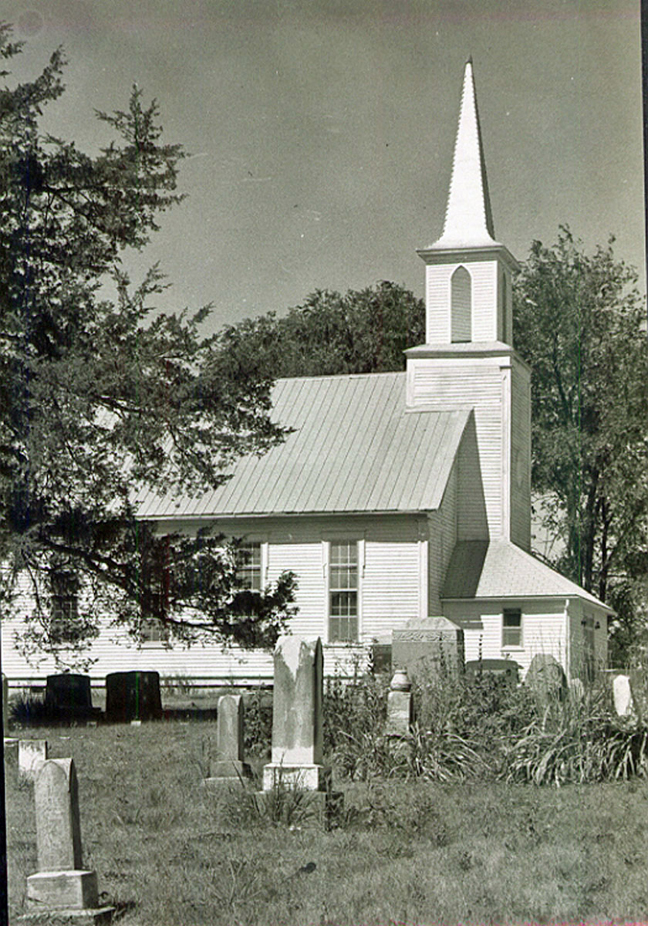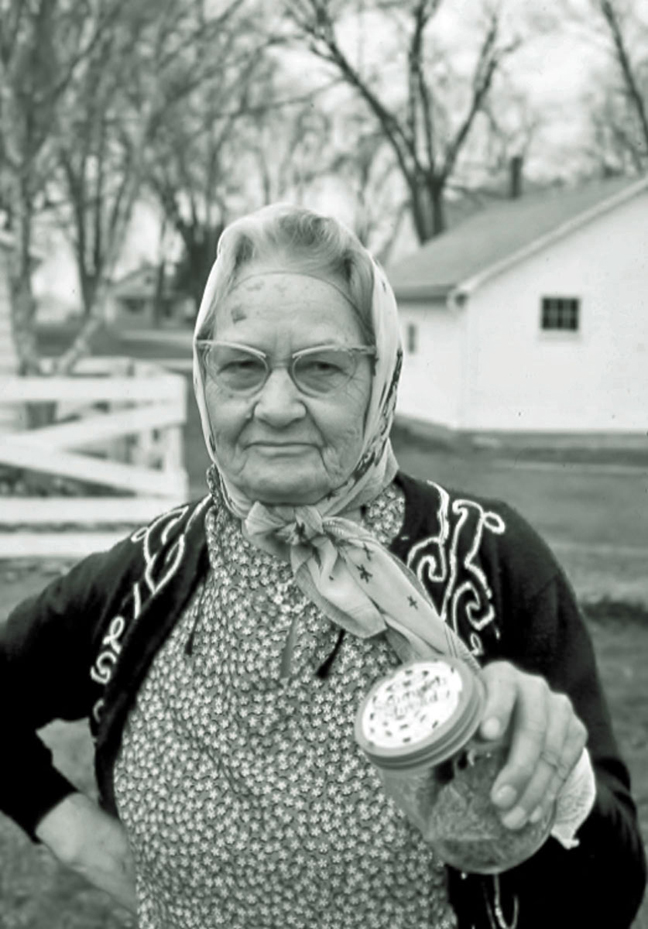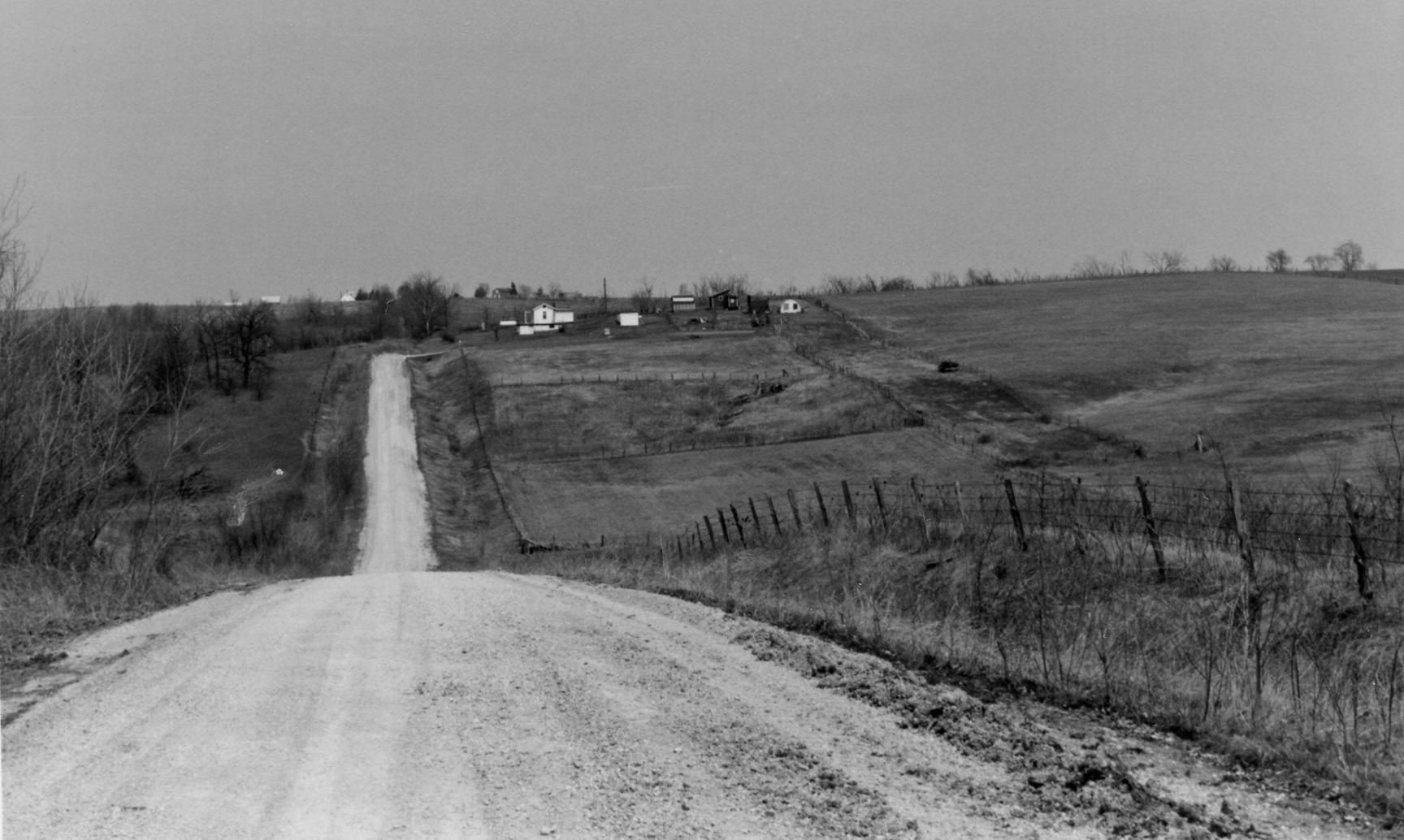Immigrant Footprints
We knew that a small group of Swedish immigrants from Kisa had arrived at this place in 1845 and staked out their homesteads on virgin land.
-
 Methodist Church and Cemetery, New Sweden, built in 1872. Photo: Lennart Setterdahl
Methodist Church and Cemetery, New Sweden, built in 1872. Photo: Lennart Setterdahl -
-
Traveling the back roads of southeastern Iowa in 1972, my husband and I came to a gravel road that took us straight up a slowly ascending hill until we saw two small white churches on the crest. One was Lutheran and one Methodist. We knew that a small group of Swedish immigrants from Kisa had arrived at this place in 1845 and staked out their homesteads on virgin land.
In Sweden, the group’s leader, Peter Cassel, had been a miller, farmer and building contractor. John Danielsson became a miller when he took over Cassel’s mill. They had heard of the abundance of "free" land in America and decided to emigrate.
The group traveled on the Göta Kanal from Östergötland to Göteborg, then on the sailing ship Superb — on top of iron, riding out storms, colliding with another vessel, and losing the ship’s front mast — finally arriving in New York after eight weeks. They had planned to settle in Wisconsin, but when they learned that the best land was already taken in that state, they changed their plans and headed for Iowa Territory. (Iowa became a state a year later, on December 28, 1846.) From New York, they were accompanied by other Swedes.
They went by railroad and ship to Philadelphia, where they continued on a primitive rail track that carried four "cars" pulled by horses but also functioned as canal boats. Over the mountains, they were pulled to the top and let down on the other side. In Pittsburgh the travelers took a steamboat down the Ohio River to Cairo, and then another boat up the Mississippi River to Burlington, Iowa. There they met a man, who had acquired land in "New Sweden," Jefferson County, so the little group headed in that direction. -
 Birgitta Lauger (Smålands Britta), Swedesburg, Iowa, showing a glass jar that she probably used as seeder. She was born in Madesjö, Småland in 1889 and emigrated in 1911. Married to Emil Lauger, whose grandfather had emigrated in the early 1850s and lived under a tree with his family in Illinois before coming to New Sweden. Both Emil and Birgitta were interviewed by Lennart Setterdahl in 1972. Photo: Lennart Setterdahl
Birgitta Lauger (Smålands Britta), Swedesburg, Iowa, showing a glass jar that she probably used as seeder. She was born in Madesjö, Småland in 1889 and emigrated in 1911. Married to Emil Lauger, whose grandfather had emigrated in the early 1850s and lived under a tree with his family in Illinois before coming to New Sweden. Both Emil and Birgitta were interviewed by Lennart Setterdahl in 1972. Photo: Lennart Setterdahl -
-
New Sweden has never been listed on any maps, but when the immigrants found a roofless cabin near Brush Creek, they had come to the right place and humorously named the place Stockholm. First, they cut brush to make a roof for the cabin. Next, they built a shanty. When they had made some bricks, they lay them out to dry on the roof of the shanty. Following a thunderstorm with heavy rains the wet and heavy bricks flattened the shanty.
At the time of the emigration, Peter Cassel was 54, his second wife Ingeborg Catharina Andersdotter was 38, and Peter’s son from his first marriage, Carl Johan, was 23. The children from the second marriage were Anders Fredrik 11, Maria Mathilda 10, Catharina 8, and Gustaf Albert 7. A brother and sister of Cassel’s wife, Erik Peter Andersson 32, and Sara Lovisa Andersdotter 20, also came along from Bjerkeryd, Kisa parish.
The Danielssons were from Kvarnstugan, Fällingsö, Kisa. Johan Danielsson was 46, and his wife Lisa Andersdotter was 53. Their children were Johan August 16, Anders Viktor 15, Maria Albertina 11, Sophia Mathilda 9, and Frans Oscar, 6.
From Tidersrum came Johannes Månsson and his wife Ingeborg Catharina Carlsdotter 39, a sister of Peter Cassel, and their three daughters, 11, 7, and 3 years old.
As soon as they had built homes for themselves, they founded a Lutheran congregation. Their minister was a shoemaker by trade. Peter Cassel sent for hymnals from Sweden.
The "New Sweden Chapel” that we saw was built in 1860 but was seldom used after the services had been moved to Lockridge. The church was on the National Register of Historic Places (it burned down a few years ago, and a replica was built), and the doors were open so we walked in. The first thing we saw was a large potbelly stove along one wall. We recognized the altar painting as a work by the Swedish-American artist Olof Grafstrom. -
 View of New Sweden from Four Corners showing the rolling landscape. Photo: Lennart Setterdahl
View of New Sweden from Four Corners showing the rolling landscape. Photo: Lennart Setterdahl -
The Methodist Church, in regular use, had been built in 1872, one hundred years before our visit. It was preceded by a log church built in 1856. Many of the settlers had become Methodists, among them Peter Cassel and John Danielson and their families. We walked around the two cemeteries and I recognized the names on the headstones of many of the early settlers. We saw markers for children who had died young.
Researching the land records, I found that Mr. Cassel claimed 40 acres of government land to begin with, while Mr. Danielson claimed 80. They had no oxen, horses or plows to work the land, only hoes and spades. Money was scarce on the frontier. The men had to walk to Burlington to find work. When they needed a loan, they had to pay 20 percent interest in advance. If they borrowed 100 dollars, they received 80. The economy was for the most part a barter system.
When land became scarce in the area, the Swedes went farther into the wilderness and founded the settlements Swede Bend and Swede Point (now Stratford and Madrid in Boone County). Later, some Swedes began to settle in Swedesburg in Henry County, where the land was flat but swampy. Swedesburg has a Swedish Museum displaying artifacts from pioneer times, among them a cooling basket that was used for the deceased before a casket could be built. The Swedish Heritage Society of Swedesburg operates the museum.
On May 21, 1857, Mathilda Cassel, the eldest daughter of Peter Cassel, married a Swedish immigrant from Hycklinge, Östergötland — Carl Johan Peterson, who had arrived in about 1850; they became farmers in New Sweden. Thanks to good contacts with descendants of the Cassel group, I learned more about Mathilda and her husband.
When the Civil War had begun and President Lincoln’s call for volunteers came, Peterson along with some 30 other young men from the area volunteered for service. -
 View of New Sweden from Four Corners. Photo: Lennart Setterdahl
View of New Sweden from Four Corners. Photo: Lennart Setterdahl -
Carl (Charles) Johan Peterson had been 16 years old when he arrived; he presumably did not attend school in Iowa. He served in Company H of the 30th Iowa Volunteer Infantry that enrolled in Jefferson County. His Civil War letters to his wife have been typed and probably translated from Swedish. The three first letters are dated Benton Barracks, St. Louis, Nov. 1, 1862, Helena, Arkansas, Dec. 5, 1862, and Memphis Mar. 24, 1863 (from Gayoso Hospital). Someone else had penned his last letter dated June 5, 1863 because he was still hospitalized and too ill to write. In the letter, he asked Mathilda to come and get him. He had been sick since Dec. 25, 1862, was disabled, and could not travel on his own. His message to Mathilda was, "When you start, all you have to do is get on board a steamboat in Keokuk and go to St. Louis, and you may have to change boats. When you come to Memphis, all you have to do is come right up from the river and ask for Gayoso Hospital."
-
• The trip would cost $45 and Charles was certain she could borrow the amount. He hoped his military pay would cover the cost. He gave her advice about the farm. "As to having an auction you can do as you wish, if you think you can get 25 cents per shock of corn. When you get some money, buy some lumber and hire someone to make a door and window for the kitchen."
• It was unusual for a woman to travel alone at the time, especially near the banks of the Mississippi River, where bandits prowled. The letter said, "You will be as safe in a steamboat cabin as at home.” Mathilda took a train to Keokuk and walked from the train station to the river, changed boats in St. Louis, and walked from the river in Memphis to the hospital. (The Battle of Stone River on Dec. 31-Jan. 3, 1863 had freed Middle Tennessee from Confederate control.)
• Mathilda managed to get her husband released and discharged on June 27, 1863. She cared for him on the way home, but Charles died July 6, 1863, just four days after the homecoming. He was interred in New Sweden’s Methodist Cemetery. Mathilda later married Frank Danielson, who had also served in the war. Frank was the son of Johan Danielson, and like Mathilda, he had come to America in 1845 as a child and they had grown up together. -
By Lilly Setterdahl
Photos by Lennart Setterdahl in 1972
See lillysetterdahl.blogspot.com for more titles of published books. -
-
